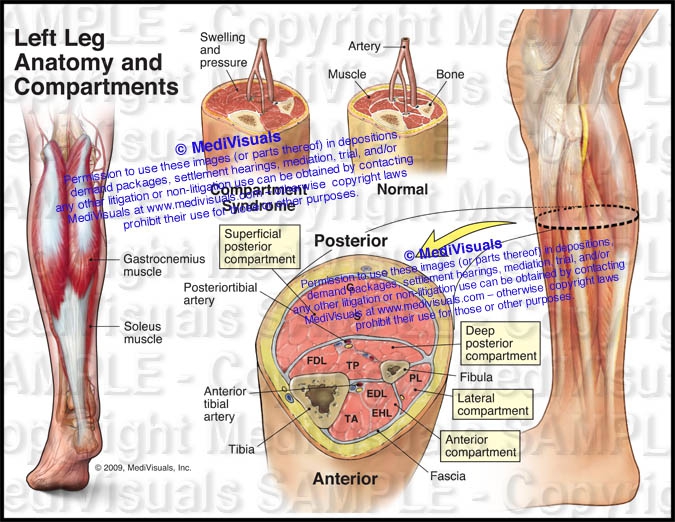

The anterior compartment contains the dorsiflexor muscles. There are four compartments in the lower leg (Images 1 and 2). These soft- and hard-tissue boundaries of each muscle group form the individual compartments. Each group is separated from the adjacent group by fascial walls, bones, or a tough interosseous membrane. The lower leg muscles are organized in groups containing muscles that perform similar functions. The compartments in the lower leg are the most susceptible to compartment syndrome. To understand how compartment syndromes arise, let’s explore this condition. Delayed treatment on an acute compartment syndrome can cause tissue necrosis and lead to limb amputation. Differentiating between a medical emergency and nonemergency is essential when the possibility of acute compartment syndrome exists. Recognizing acute versus chronic compartment syndrome is crucial.Ĭhronic compartment syndromes may respond well to massage, but acute compartment syndromes are an emergency condition that need immediate care by a physician.

1 There are two forms of compartment syndrome: acute and chronic (often called exertional compartment syndrome).

Compartment syndrome occurs most often in the lower leg, although other regions (such as the thigh, arm, or gluteal region, among others) can also be affected. Putting the Squeeze on Compartment Syndrome By Whitney Lowe Īnterior leg pain is common for those with active lifestyles, and there are a number of conditions that can appear in this region of the body, including compartment syndrome. Massage and Bodywork Magazine for the Visually Impaired - Putting the Squeeze on Compartment Syndrome Back to Massage and Bodywork Issue List March/April 2021 Issue Back to March/April 2021 Article List


 0 kommentar(er)
0 kommentar(er)
